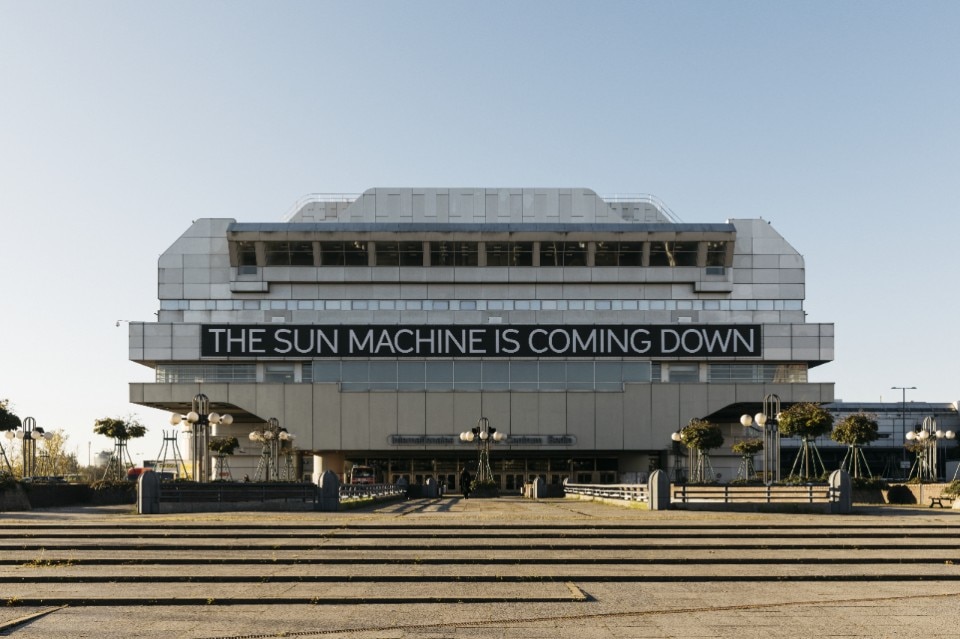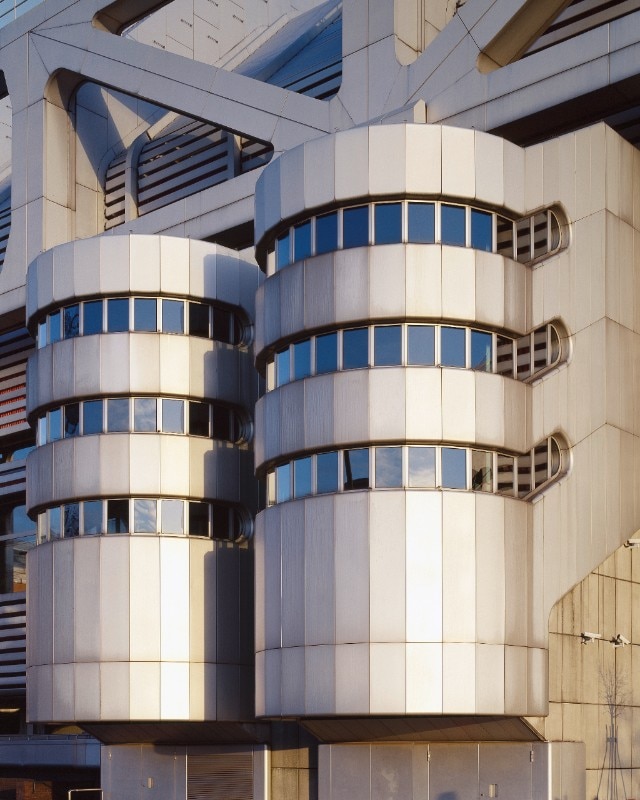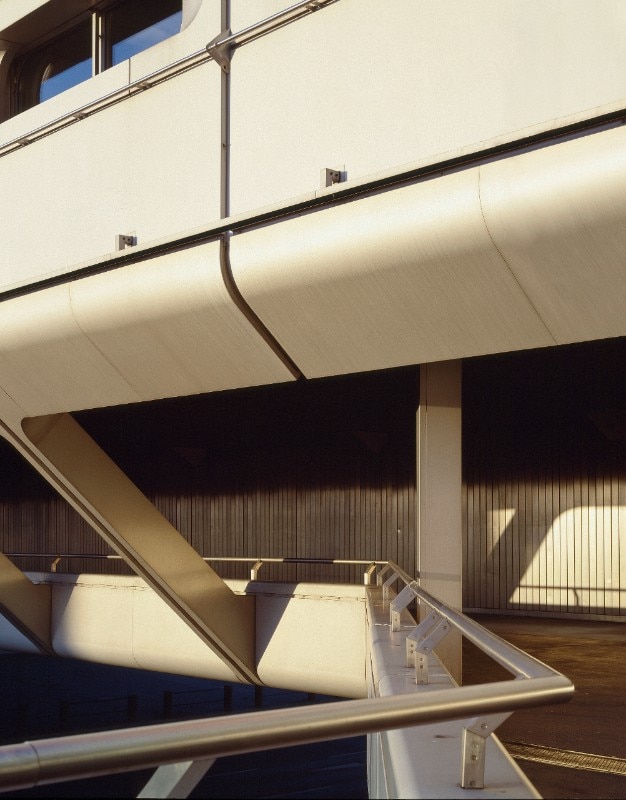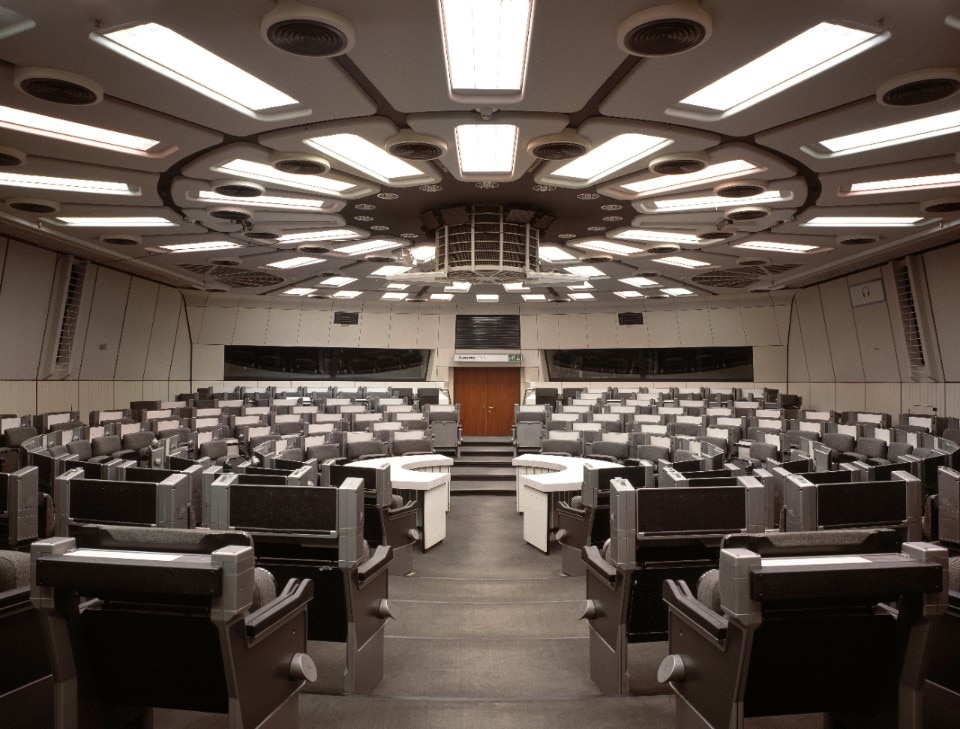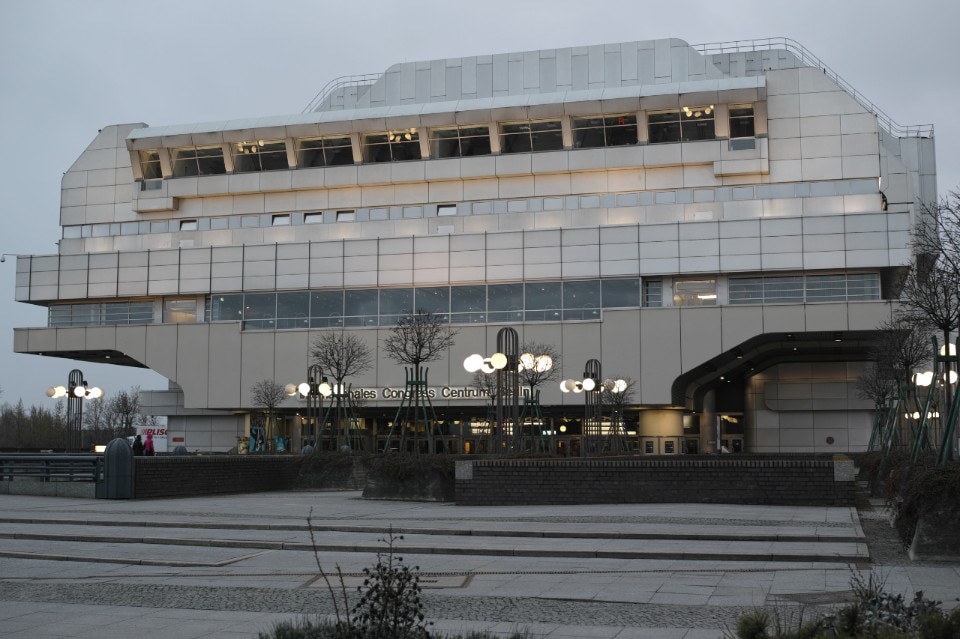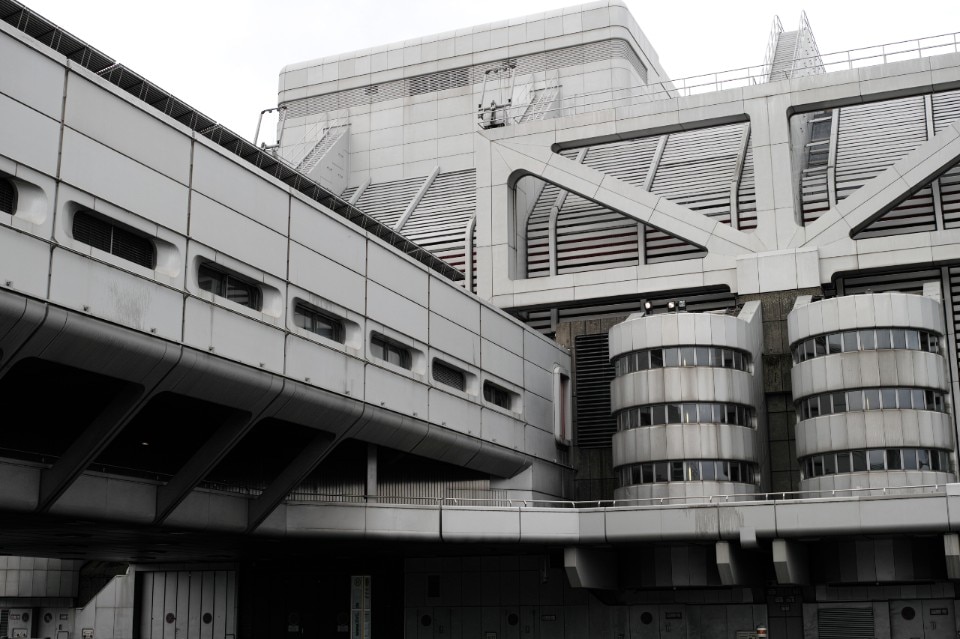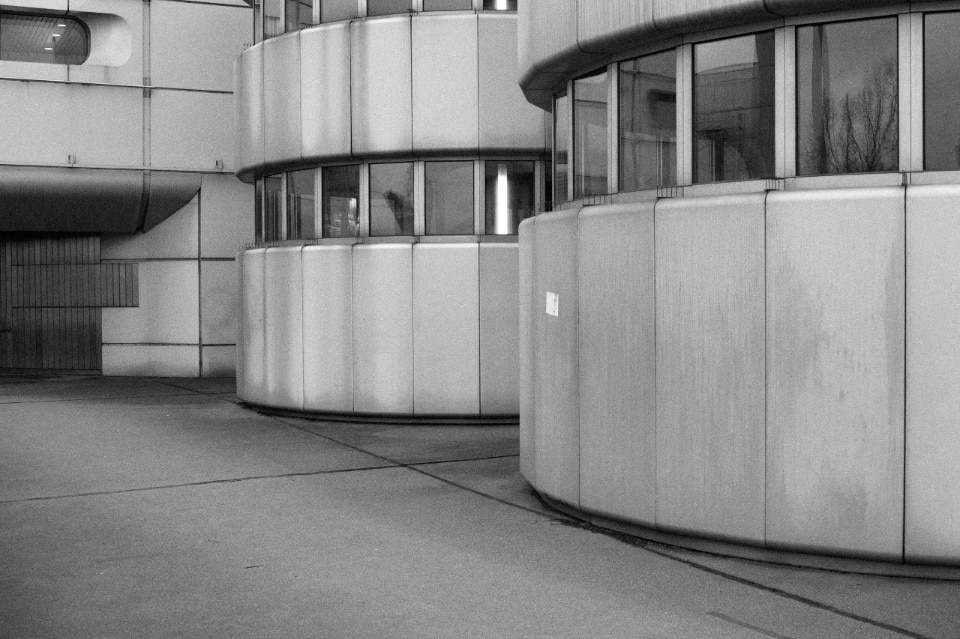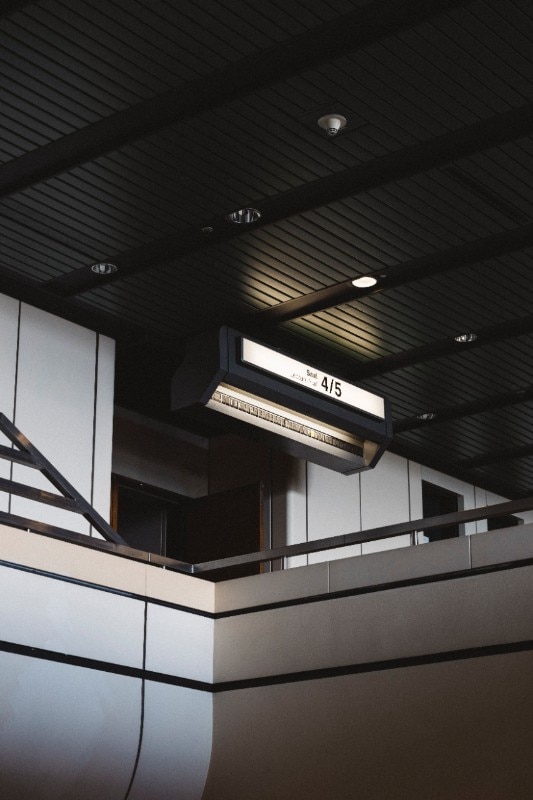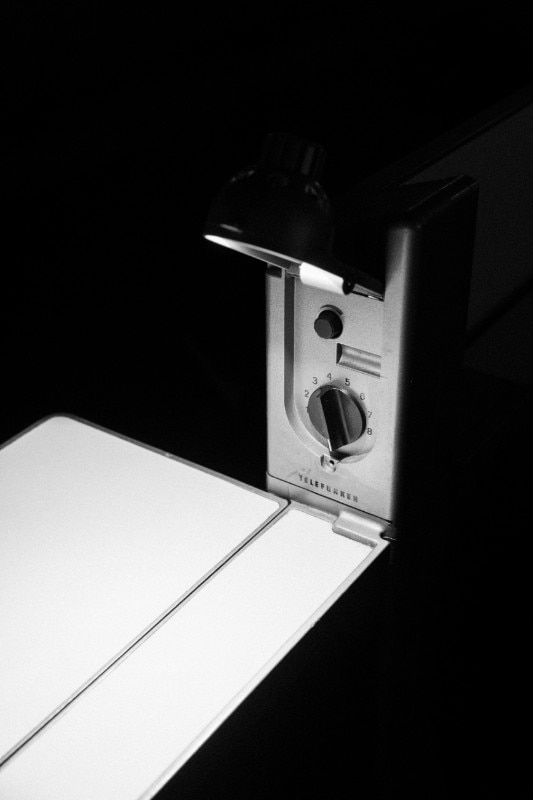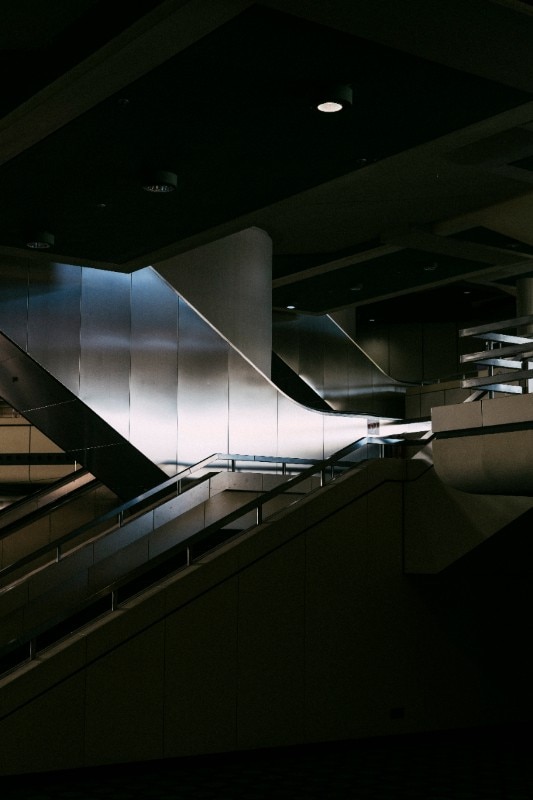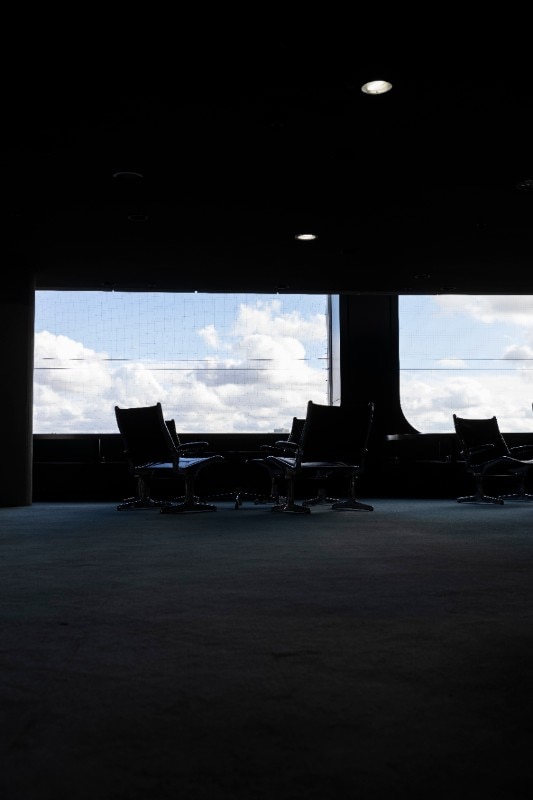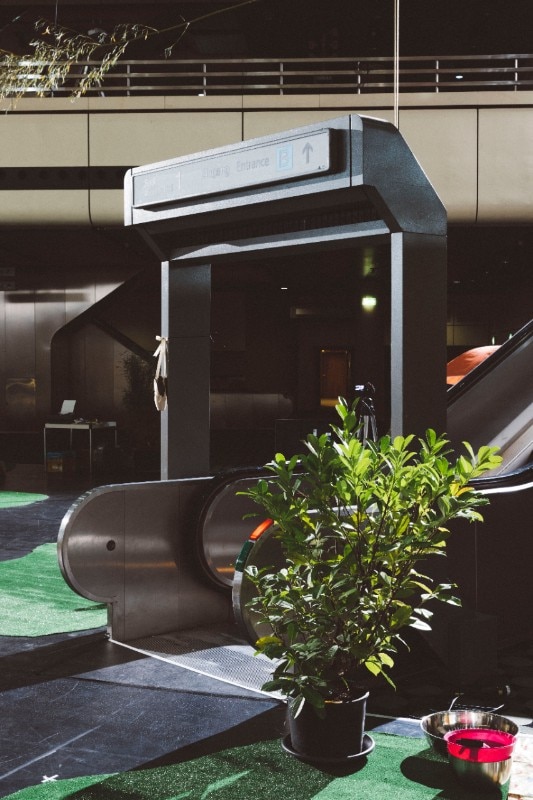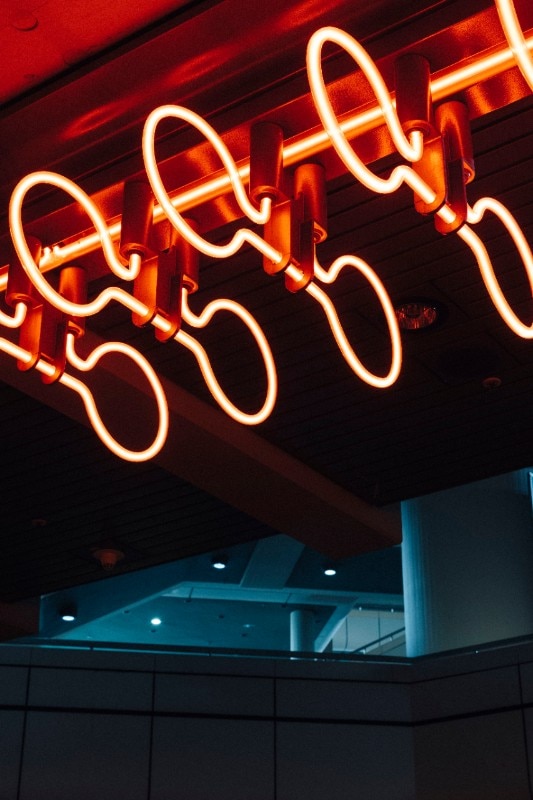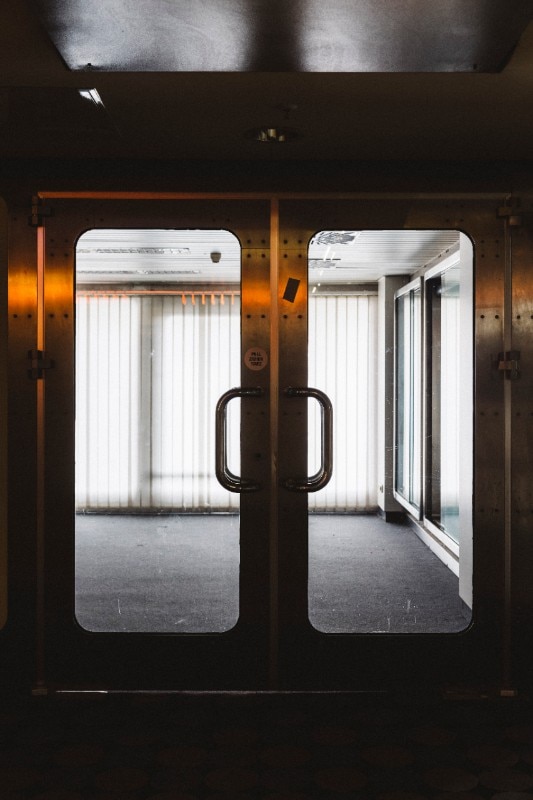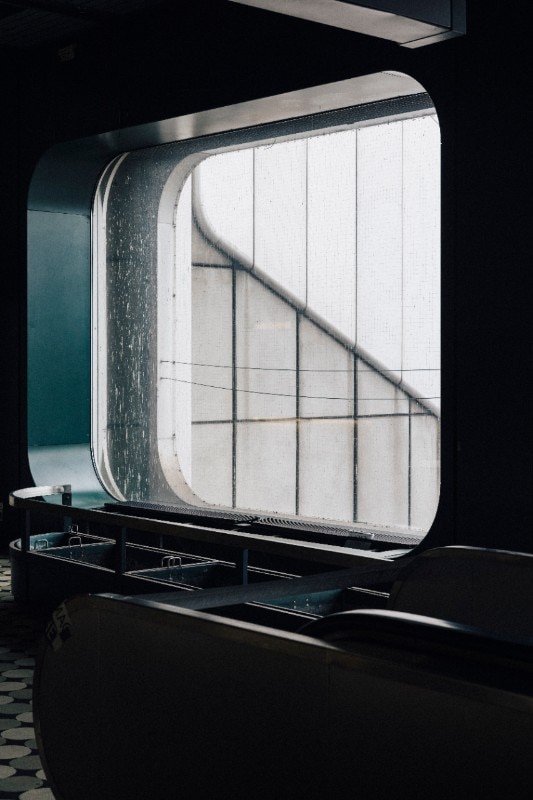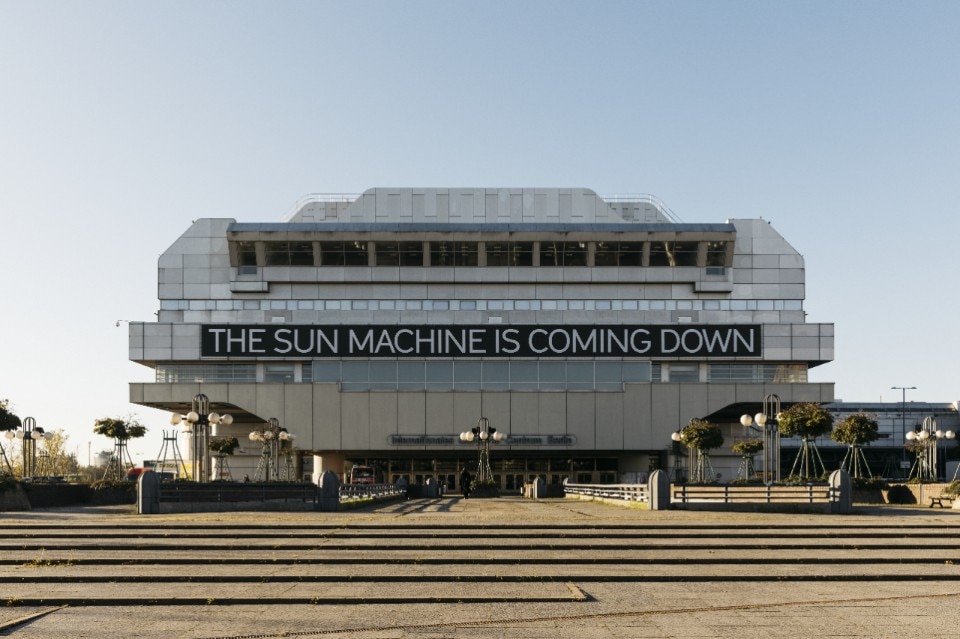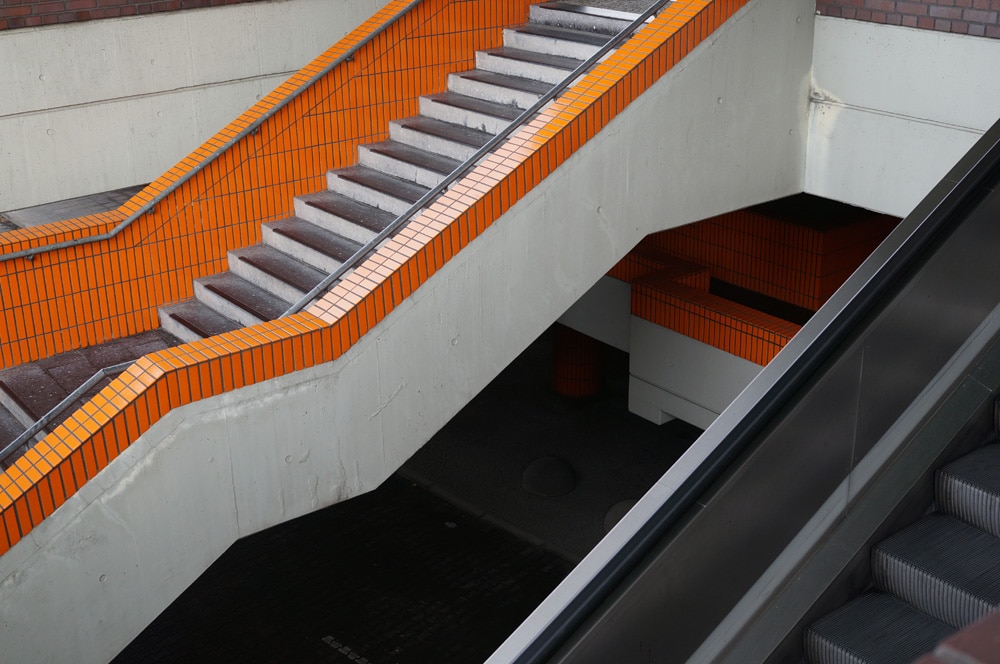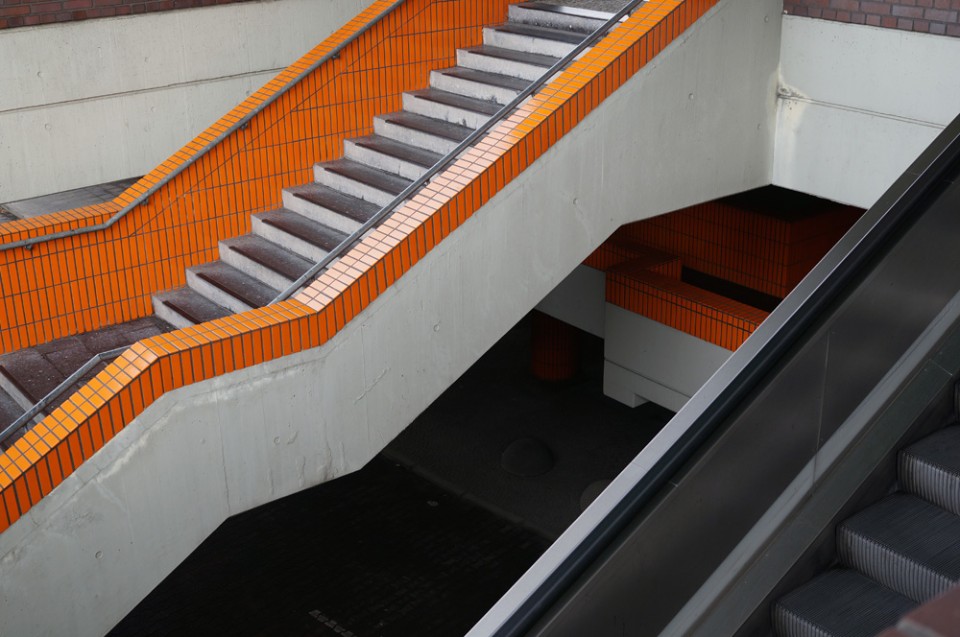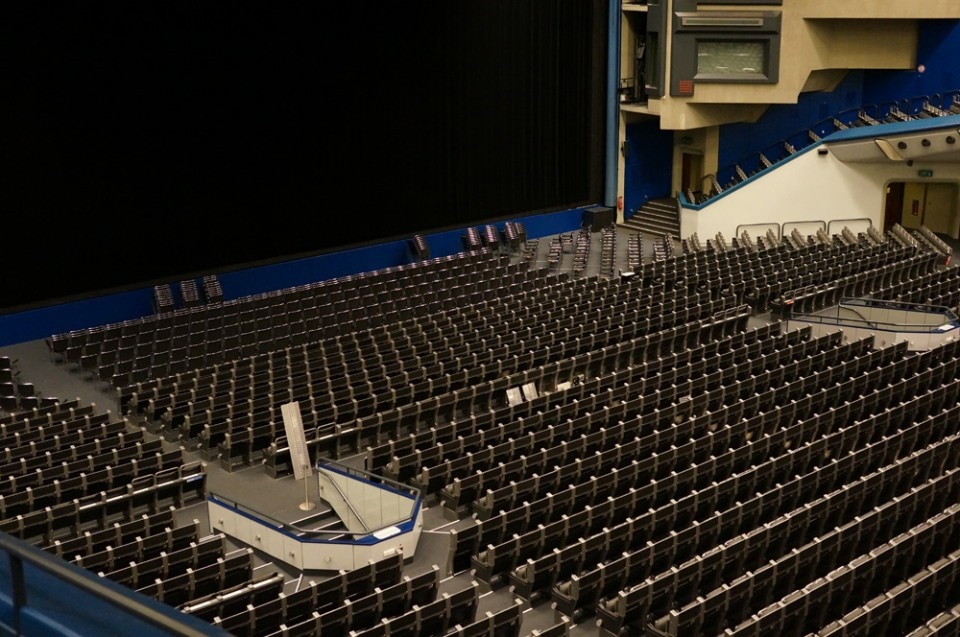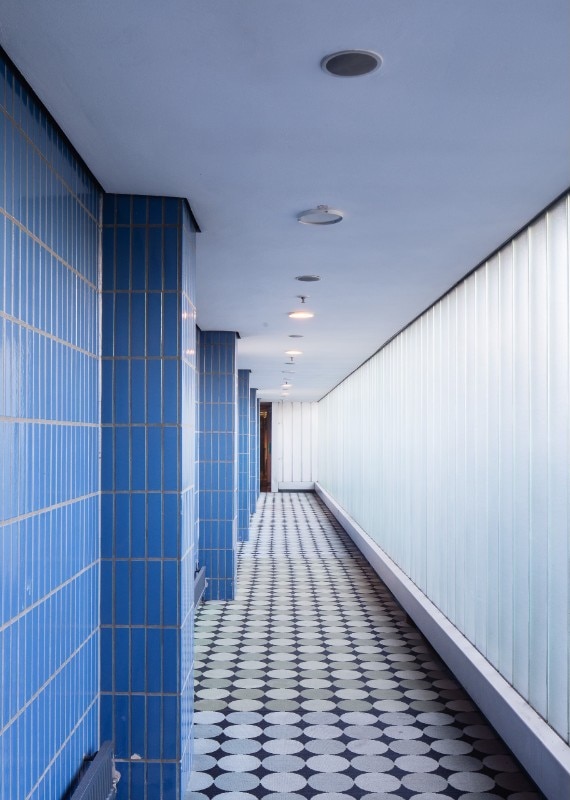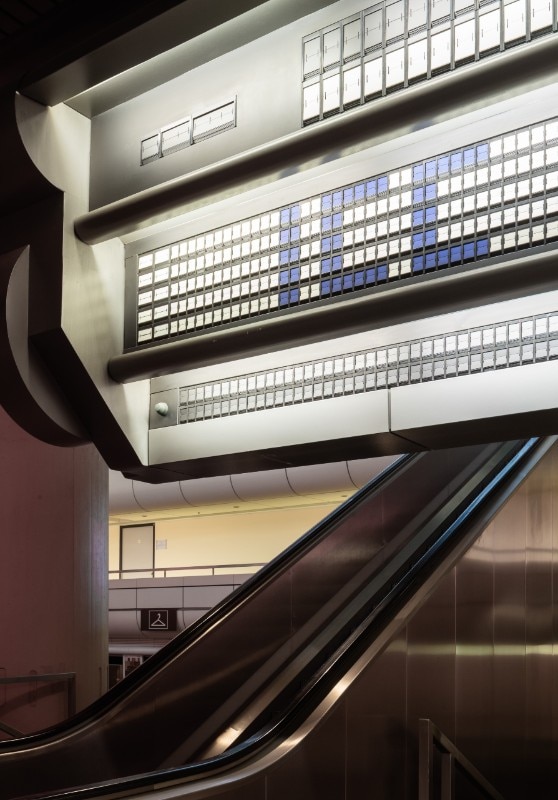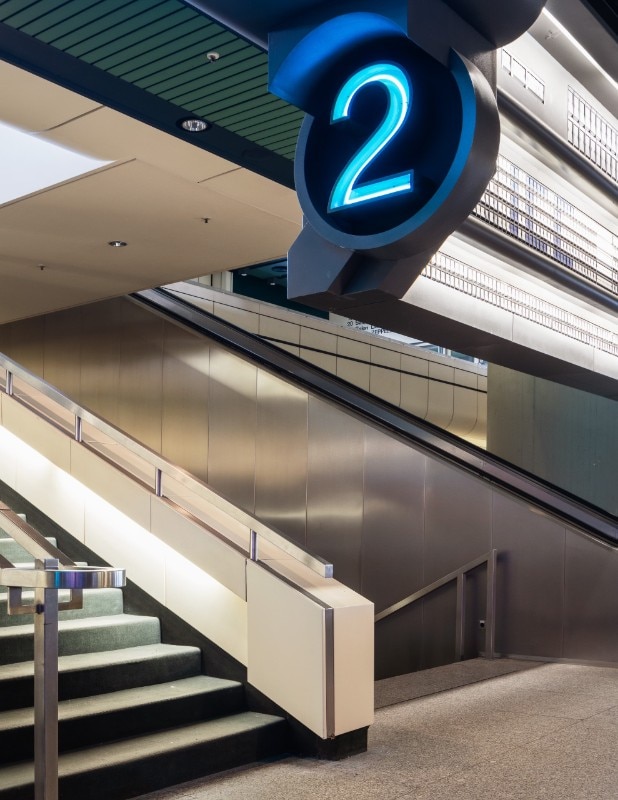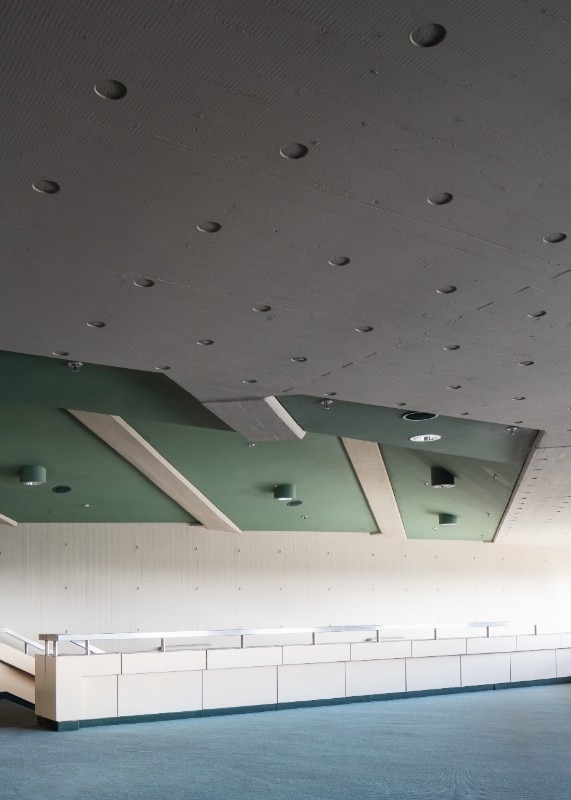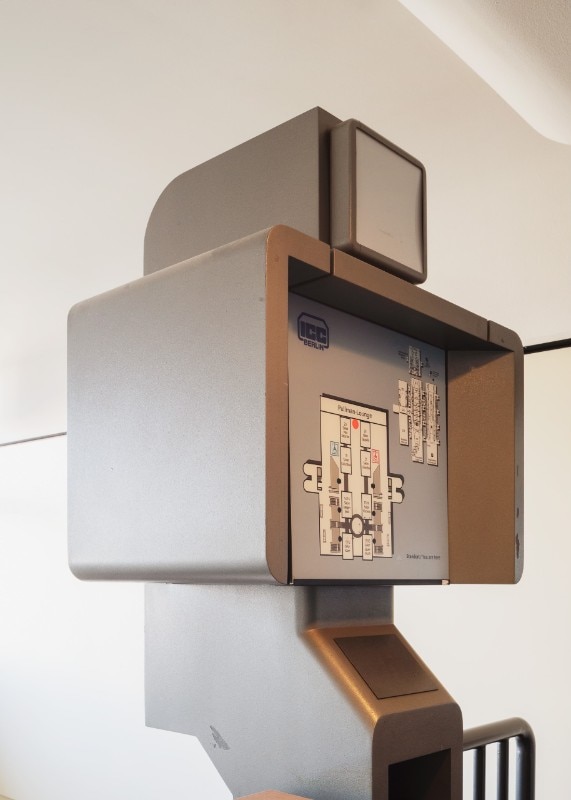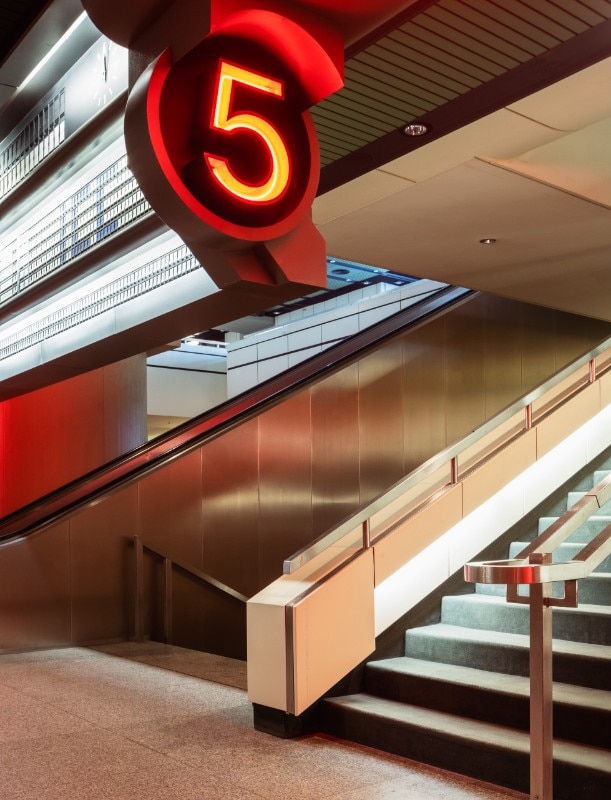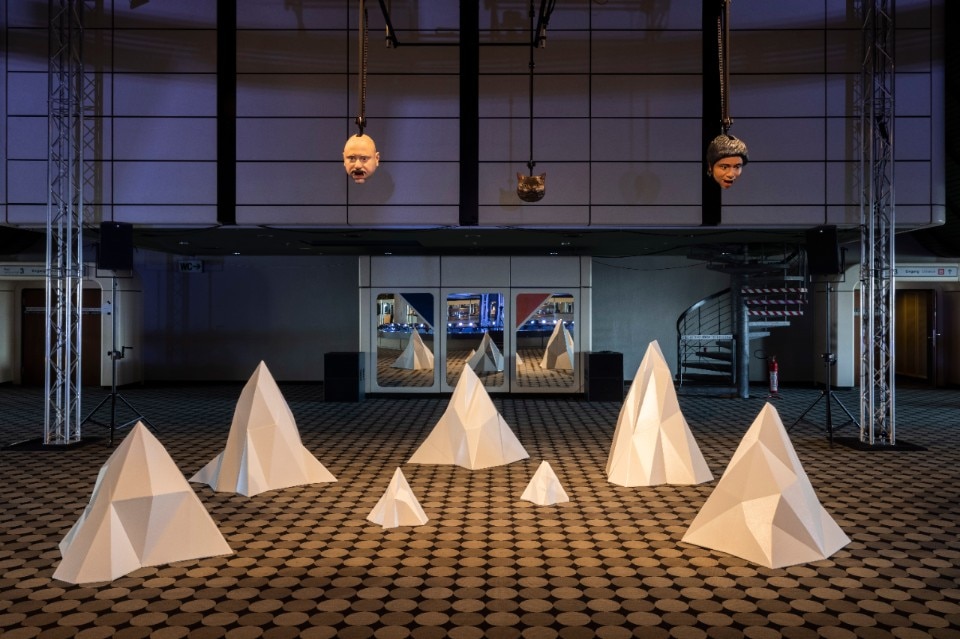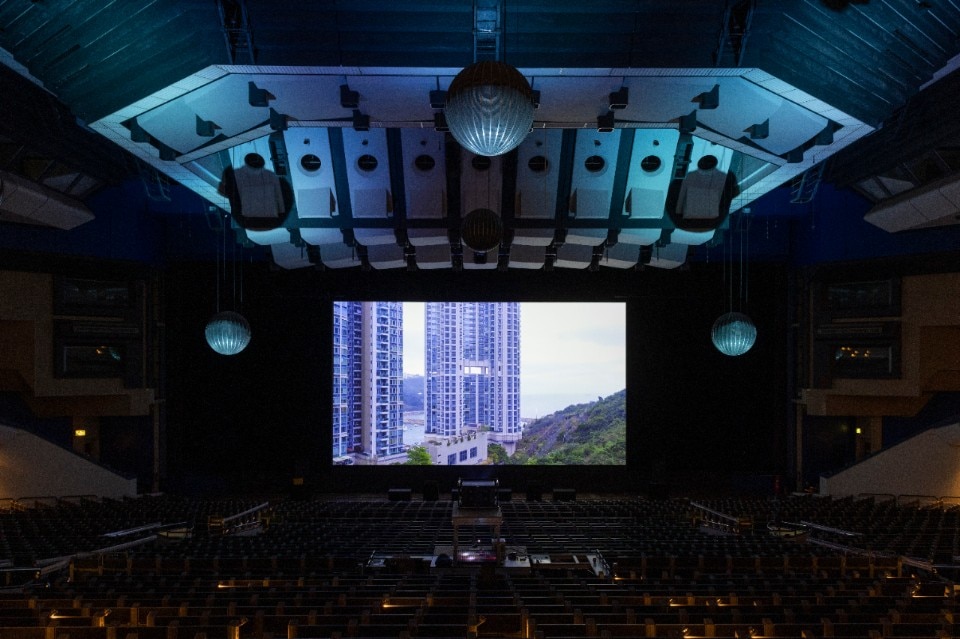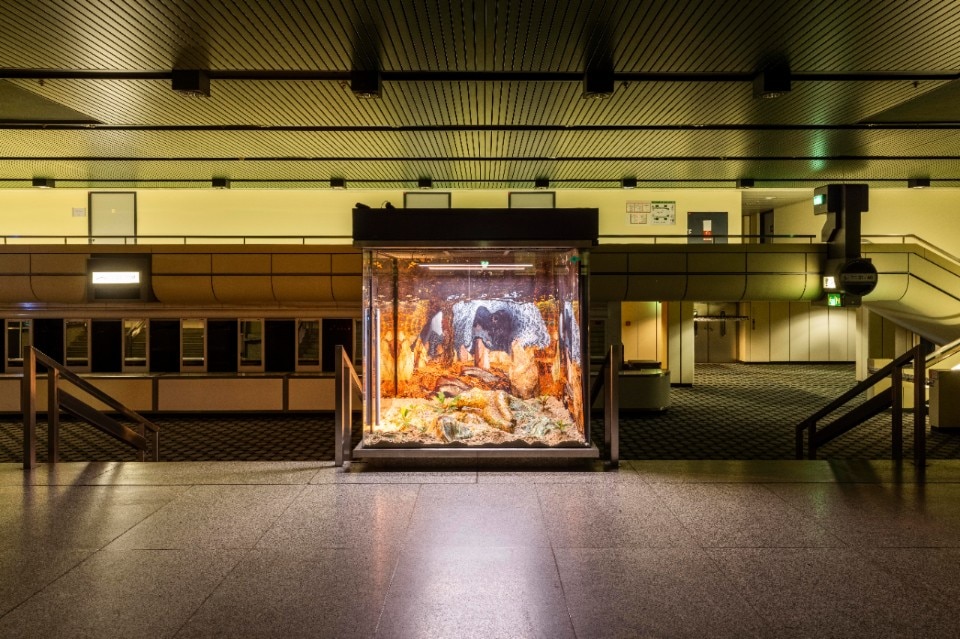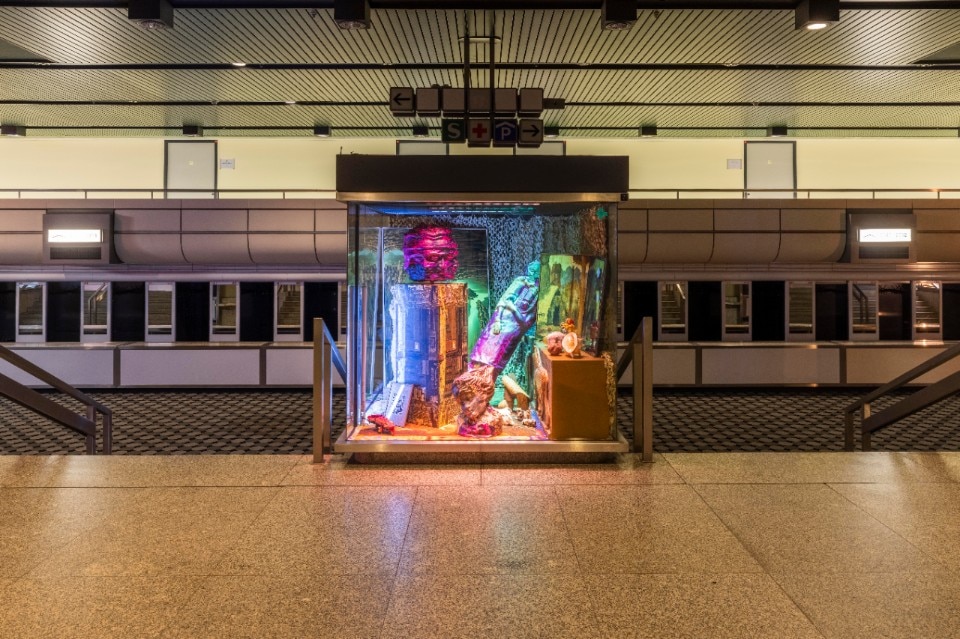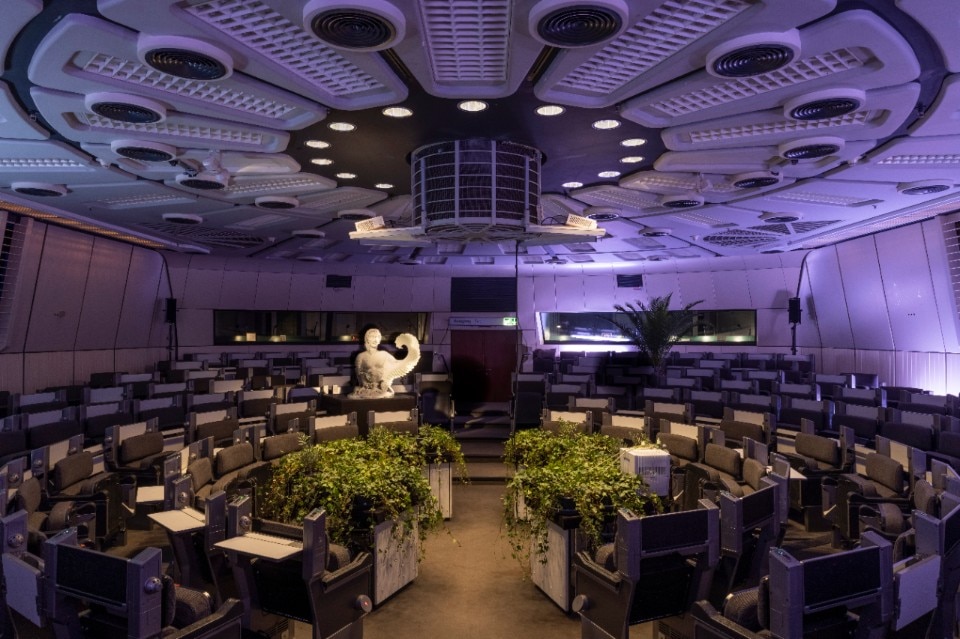If you look up “icc berlin” on YouTube, two videos will immediately catch your eye. The first, called Congress Centre Berlin opens, starts with a few shots from the street. The whitish shell of the building towers above the landscape of concrete, haze and passing cars, like a pachyderm that is resting while everything around it is moving frantically. It’s April 2, 1979, the day of the inauguration, and elegantly dressed men and women are swarming about on the geometric carpeting of the long central hall on the ground floor. We meet them again among the buffet tables, filling a plate with spaghetti or bringing a spoonful of soup to their lips, awkwardly eating it while standing. There are West German President Walter Scheel and actor Harald Juhnke, who couldn’t miss the opening of the world’s largest conference centre.
The second video is a scene taken from the first part of The Apple, a 1980s musical that was too bad to even become a cult classic and was shot almost entirely inside the ICC. Amidst improbable choreographies and songs sung by people wearing flashy late 1970s B movie costumes, the only convincing protagonist is the futuristic interior architecture of the ICC. It is as if the scenography was specifically built in some continental European studio to replicate the sci-fi interiors of Star Wars or Battlestar Galactica. Instead, it is simply the styling of the largest convention centre on the planet, which opened just a year ago.
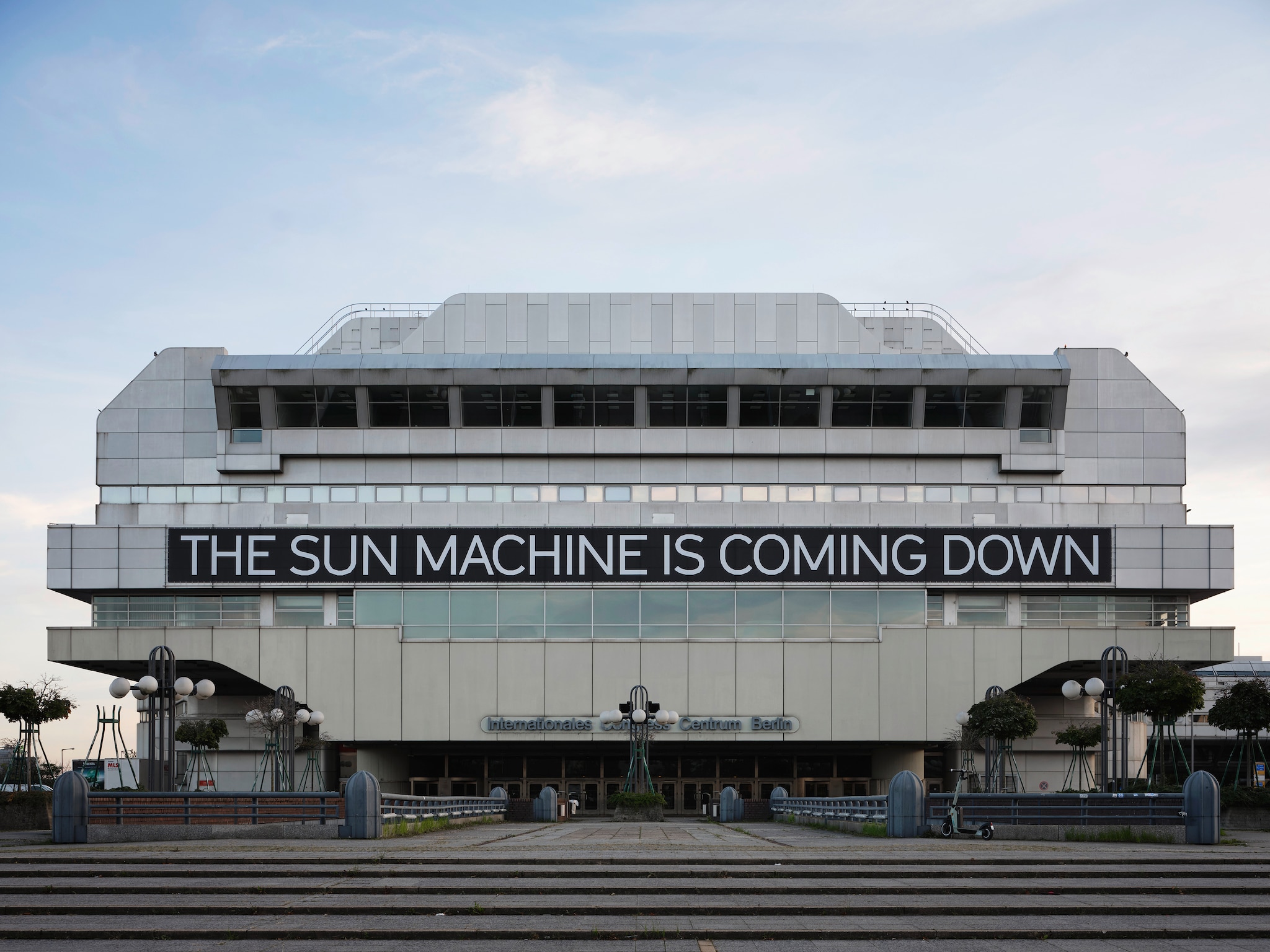
The building as told in Domus
In 1979, Domus dedicated a long article in issue 597 to the inauguration of the Internationales Congress Centrum. Gerhard Ullmann described the ICC as “the building of the superlatives”, reeling off a long list of the numbers of the huge project promoted by the Federal Republic of Germany: “850 million marks spent; 125,000 cubic metres of reinforced concrete; 5,200 tons of steel for the structure of the roof; more than 1,000 workers and technicians; 24,000 square metres of surface area: space to accommodate 20,000 people at the same time, of which 5,000 and 2,000 in two gigantic adjacent multi-purpose halls”.
“Built between 1973 and 1979 and designed by Ralf Schüler and Ursulina Schüler-Witte, the International Convention Centre was one of the most characteristic buildings in West Berlin at that time”, explains to Domus Christoph Rauhut, the head of Berlin’s state monument office. “In its role as a venue for international conventions, it represented the global orientation of this isolated city in the Western forefront”.
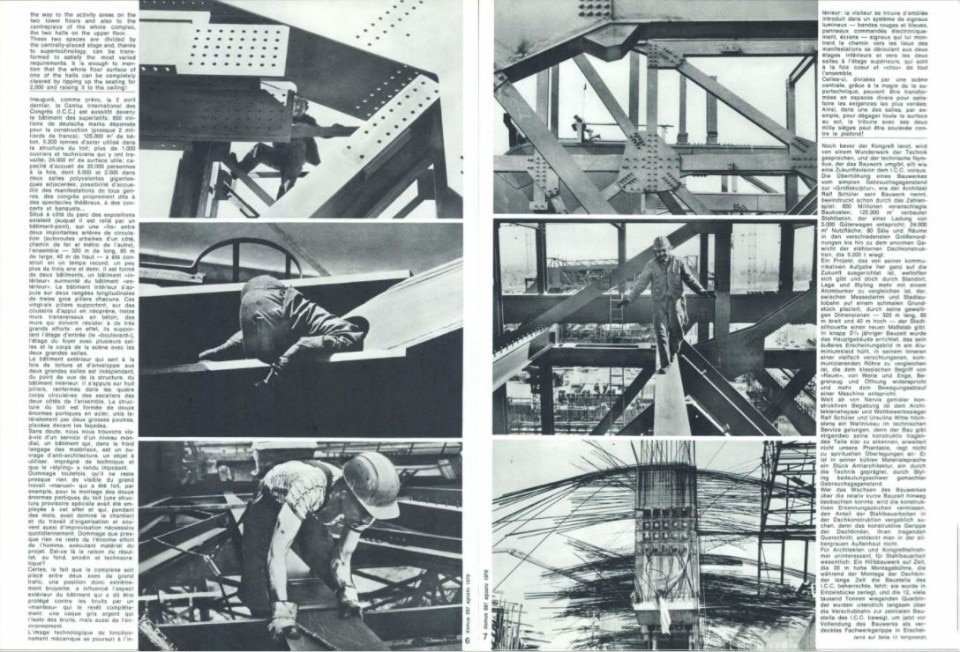
As long as three football fields, 40 metres high and more than twice as wide, the ICC is a giant structure made up of not one, but two buildings, one inside and one outside. The latter rests on eight pillars, while the former rests on two rows of thirteen pillars, each two and a half metres in diameter, supporting the same number of transversal concrete walls, “walls that have to withstand enormous stress: they support the entrance floor, the foyer floor with its various rooms and the main body of the stage with its two rooms”, as the meticulous Ullmann wrote in Domus 597.
The conference centre switches its lights on again
Gigantic and extremely expensive to maintain, the ICC’s golden age did not last long. Since the beginning of the new millennium, the centre has been used less and less, so much so that rumours about its possible demolition have spread on many occasions. In 2014, it was closed to make way for asbestos removal work. Since 2019, it is a listed building: “Its protection is a tribute to the exceptional nature of the building and also documents the great public interest in its preservation”, says Cristoph Rauhut, who this August, in a long and heartfelt interview with the Tagesspiegel newspaper, mentioned this “icon of high-tech architecture” among Berlin’s treasures to be preserved.
October had just begun when “The sun machine is coming down”, a ten-day festival of “new art and art inspired by performances, circus, music, movies and installations”, turned the lights of the ICC on again, after almost a decade of darkness. Literally. In fact, the centre’s iconic lighting system, with its coils of coloured neon, came back on. “The visitor immediately enters a system of luminous signals - red and blue bands, electronically operated panels, monitors. These signals show them how to reach different event locations on the two lower floors and the two rooms on the upper floor,” Ullmann wrote in Domus in 1979.
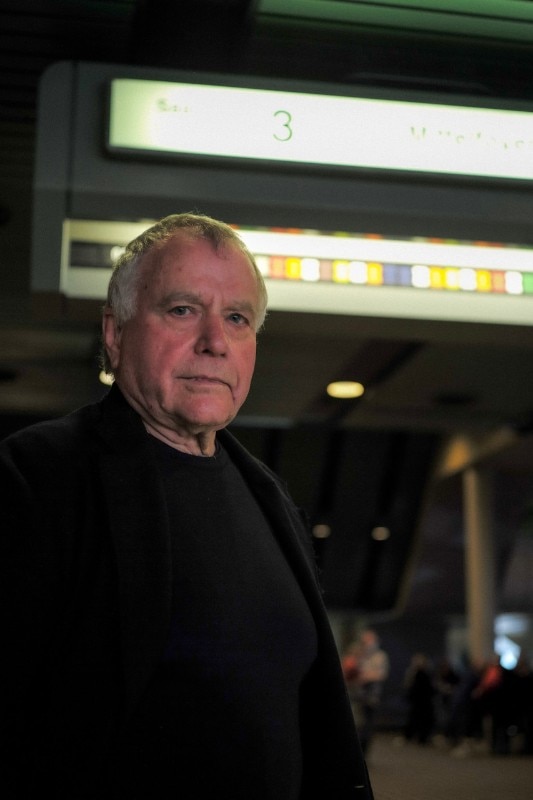
The inspiration for the lighting system is anatomical, with blue and red being the colours of blood circulation. The path unfolds in different branches right at the entrance, past the foyer, explains Frank Oehring, the artist who designed the lights. I meet him under the large suspended sculpture that coincides with the “head” of this sorting circuit.
The inspiration for the lighting system is anatomical, with blue and red being the colours of blood circulation. The path unfolds in different branches right at the entrance, past the foyer, explains Frank Oehring, the artist who designed the lights. I meet him under the large suspended sculpture that coincides with the “head” of this sorting circuit.
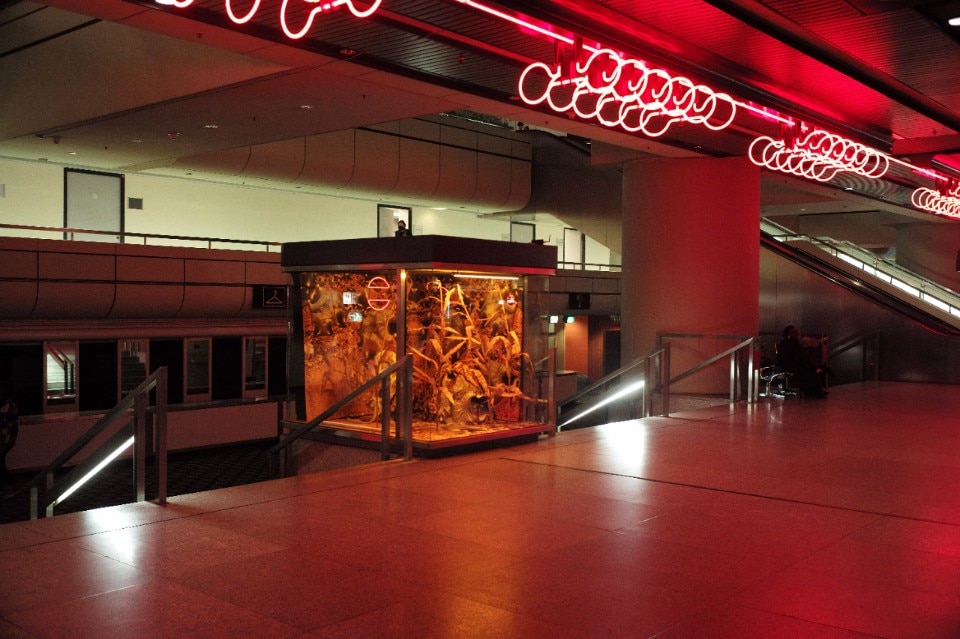
Coloured neon coils, illuminated numbers and still-functioning display boards characterise the visual identity of this incredible convention centre, with such a contemporary impact that many Sun Machine goers must surely have thought that the lighting system was a new work of art specially made for the event.
Oehring, like many Germans of his generation, understands English but prefers to speak German. Before we say goodbye, after a long walk up and down the ICC, he takes me aside, points to the artwork and the people around him, and says: “This is big for me,”. The ICC’s circulatory system has started pumping again, if only for a few days.
From ICC to ICCC
“The Sun Machine is coming down” is only a small part (that lasted a few days) of a larger dream of giving the ICC a new life. It involves Berlin’s dizzying growth in recent years, the second life as a startup incubator of the not-so-distant former Tegel airport, and the fact that the ICC is a listed building and it is very unlikely that it could be a convention centre in the age of Covid-19 and Zoom meetings. According to Silke Neumann of Bureau N, the Berlin consultancy that invited Domus to visit the centre during the days of its reopening, it’s time to speed up a redevelopment project that dates back to the first half of the last decade. Adding a “C” to the original name.
“The idea for the ICCC, an international centre for contemporary culture, came in 2014 when the state of Berlin put out a tender to develop a new utilisation concept, including site regeneration and funding for the historic site,” says Neumann. “Our client was a private investor with a vision: they wanted to transform this building into a cultural hub.” The project was designed to have a big impact on Berlin and at the same time attract international attention.
The uniqueness of the ICC
The temporary reopening of the ICC is also an opportunity to meet Heinz Oeter, who focused on the engineering side of the structure and previously worked with Mies Van Der Rohe on the Neue Nationalgalerie. Still dynamic and full of spirit despite his age, Oeter strongly believes in giving the ICC a future, and as soon as we sit down, he pulls out a thick folder full of documents he has written about the building.
Looking back, Oeter strongly emphasises the crucial role Ralf Schüler played in the project of the centre, which he designed together with Ursulina Schüler-Mitte, who is still alive. Also an engineer, Schüler was for Oeter “a natural talent”, whose passion for transport design – especially aircraft – is fully reflected in the structure. “He was a visionary”, says Oeter, who goes on to explain how the construction of the congress centre, which involved a team of over 100 people, can also be described as the achievement of a group of young people who found themselves with a huge project in their hands. “Mies was a natural-born diplomat, he talked to everyone, but Schüler’s greatest strength was knowing how to run stuff,” says Oeter when I ask him to compare the two.
.jpg.foto.rmedium.jpg)
It all started in the late 1960s, with a tender for an auditorium that was to accommodate less than 5,000 people. But this was a place destined to become a symbol, an ideological statement, and the project of that first convention centre grew over the years until it quadrupled its capacity. To find something similar to use as inspiration, the planners went to Moscow, because there was nothing like it west of the Wall. But it was Schüler’s visionary spirit that made the ICC unique. With masterful solutions such as the so-called Hall 2, where “to free up the entire floor area, the 2,000 seats making up the grandstand can be tipped over and raised against the ceiling”, as Ullmann wrote in Domus. Moreover, the same hall could be placed in continuity with the larger Hall 1, creating a central stage that could accommodate up to 7,000 spectators.
That’s exactly where the orchestra for the celebrations for the opening of the ICC played. Christiane F. had been published about a year earlier, and a few months later Bowie would close the so-called Berlin trilogy with Lodger. The USSR was preparing to invade Afghanistan, a momentous event in the Cold War. It is precisely in this scenario that the ICC became a symbol of Western economic power to be flaunted in the face of the Wall. It looked like a spaceship crashed into the split capital city.
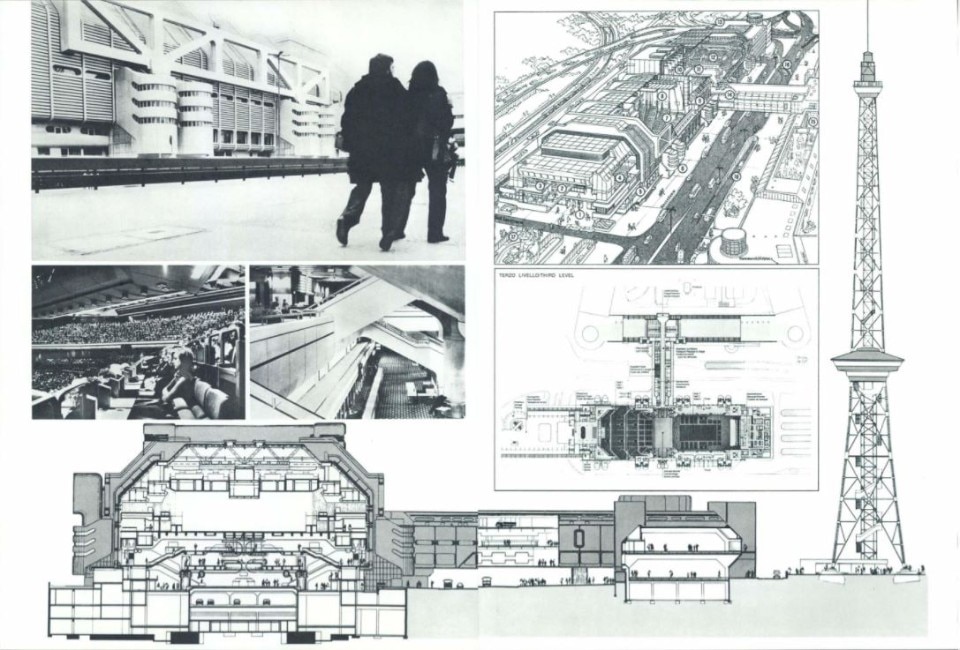
When writing about it for Domus, Gerhard Ullmann dismissed the ICC as a piece of anti-architecture, “an object of use impregnated with technology and made imposing by its ‘styling’”, an “anonymous and technocratic” building, but he probably was being shortsighted. Today we appreciate its interiors, which have remained pretty much the same; we walk on the same carpeting that can be seen in the video of the inauguration; we are enchanted by details of a world that no longer exists, such as the ashtrays in the bathrooms, the system of monitors at the entrance to the ‘brain’; we glance at the huge windows that silently look out onto roads and railways.
We are inexorably brought back to the time when the opening of the congress centre inaugurated the last two decades of the Cold War. The ICC recounts this page in history in a way that very few other artefacts on this planet can do. For this reason alone, Berlin could hardly do without it. But we obviously hope that a future as bright as its ambitions awaits it.
Opening image: Internationales Congress Centrum (ICC), Ralf Schüler and Ursulina Schüler-Witte, 1979, Berlin, Germany. Photo Nuno Cera


